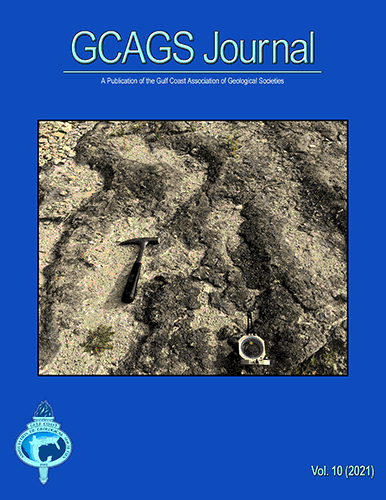Contents
Preface
Investigation of the Corbula Bed of Central Texas as the Product of Catastrophic Tsunami Deposition
Roger Sigler, Heather Fell, Brenda L. Kirkland, and C. Van Wingerden
Quantitative Modeling of Secondary Migration: Understanding the Origin of Natural Gas Charge of the Haynesville Formation in the Sabine Uplift Area of Louisiana and Texas
Lauri A. Burke
Cyclicity of Carbonate Shoaling Sequences of the Lower Cretaceous Pettet Formation, Rusk County, East Texas
Kelly E. Hattori and Robert G. Loucks
Stratal Architecture, Lithofacies, Environmental Setting, Depositional Processes, and Associated Geological Characteristics of the Upper Cretaceous Austin Chalk in Louisiana
Robert G. Loucks, Christopher K. Zahm, Toti E. Larson, Laura C. Zahm, and Peng Zeng
Stratigraphic Architecture of the Shelf-to-Intrashelf Basin Transition along the Northern Margin of the Late Albian Maverick Intrashelf Basin, Lower Pecos River Canyon, Southwestern Texas
Jeffrey Sitgreaves and Charles Kerans
The Wichita Paleoplain in Central Texas
Peter R. Rose
Update on the Paleogene Water-Level Drawdown Hypothesis, Gulf of Mexico
Stephen P. J. Cossey, Joshua Rosenfeld, Mark Bitter, and James Pindell |
|
2021 (Vol. 10)

Cover: Lowest antidune bed at Canyon Lake Gorge. Several lunate wave crests occur with steeper lee sides facing west, therefore flow was towards the west (e.g., Leeder, 1982). The strike of wave crests is roughly 10° so paleocurrent moved at +/- 280°. Other more mound-shaped antidunes (lower left and upper part of the photograph) are slightly asymmetrical with a longer, gentler stoss side to the east and steeper lee side to the west. Distance between wave crests varies between 30–40 cm with wave heights of 4–5 cm. For more information, please see Sigler et al. paper herein. |

